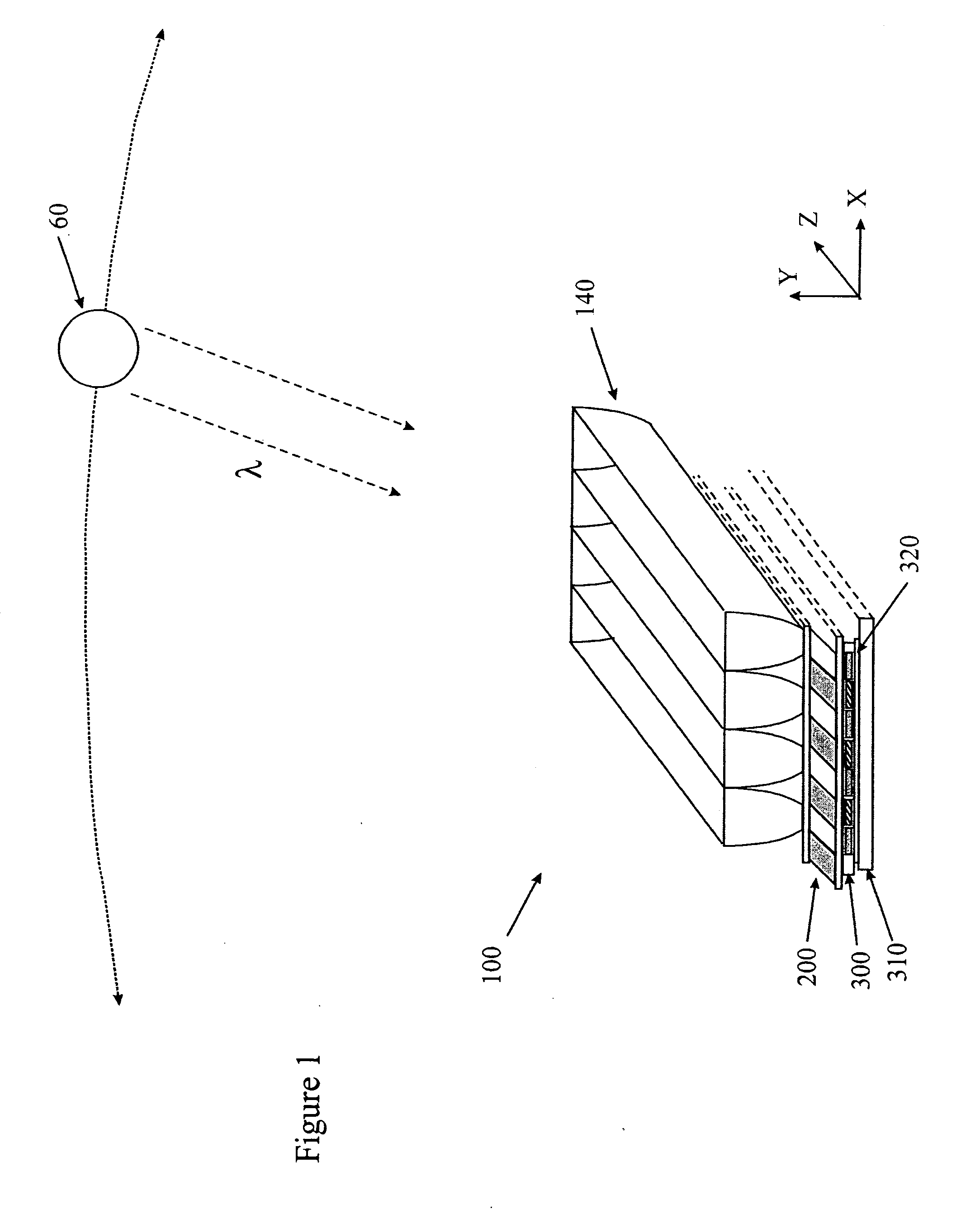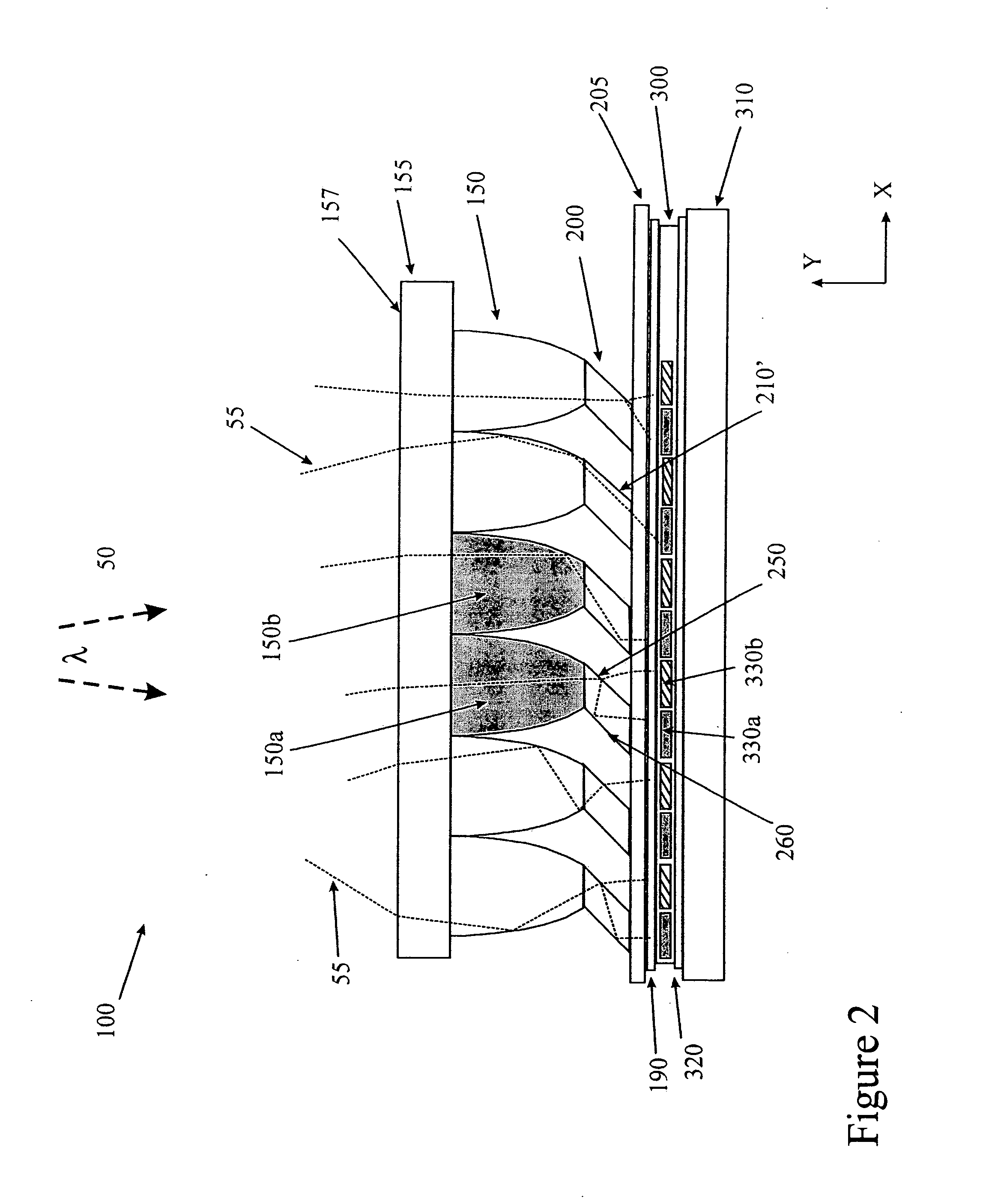Optically enhanced multi-spectral detector structure
a detector structure and optical enhancement technology, applied in the direction of optical radiation measurement, instruments, light radiation electric generators, etc., can solve the problems of insufficient materials and processes used to achieve this efficiency, high material cost, and insufficient efficiency per area, etc., to achieve the effect of improving efficiency
- Summary
- Abstract
- Description
- Claims
- Application Information
AI Technical Summary
Benefits of technology
Problems solved by technology
Method used
Image
Examples
Embodiment Construction
[0047]Classical solar energy conversion uses concentrators, such as CPCs, to maximize the solar power density into the smallest area. In the case of photovoltaic conversion, the historical limits of semiconductor wafer size and cost motivated a maximization of solar energy conversion per unit area. Additionally, as the current produced by photovoltaic cells is proportional to the irradiation incident onto the cells, more light will increase the electrical output. In the case of photo thermal conversion, such as applying solar energy to heat water flowing in a pipe, maximizing solar energy density minimizes the thermal mass and thermal dissipation. Concentrators, such as CPCs, also have a significant additional advantage that the wide acceptance angle, for example ±40°, enabled an efficient solar light conversion that does not require solar tracking. However, in the future, as large area solar cells become increasingly economical, maximum solar concentration may become a less compell...
PUM
 Login to View More
Login to View More Abstract
Description
Claims
Application Information
 Login to View More
Login to View More - R&D
- Intellectual Property
- Life Sciences
- Materials
- Tech Scout
- Unparalleled Data Quality
- Higher Quality Content
- 60% Fewer Hallucinations
Browse by: Latest US Patents, China's latest patents, Technical Efficacy Thesaurus, Application Domain, Technology Topic, Popular Technical Reports.
© 2025 PatSnap. All rights reserved.Legal|Privacy policy|Modern Slavery Act Transparency Statement|Sitemap|About US| Contact US: help@patsnap.com



